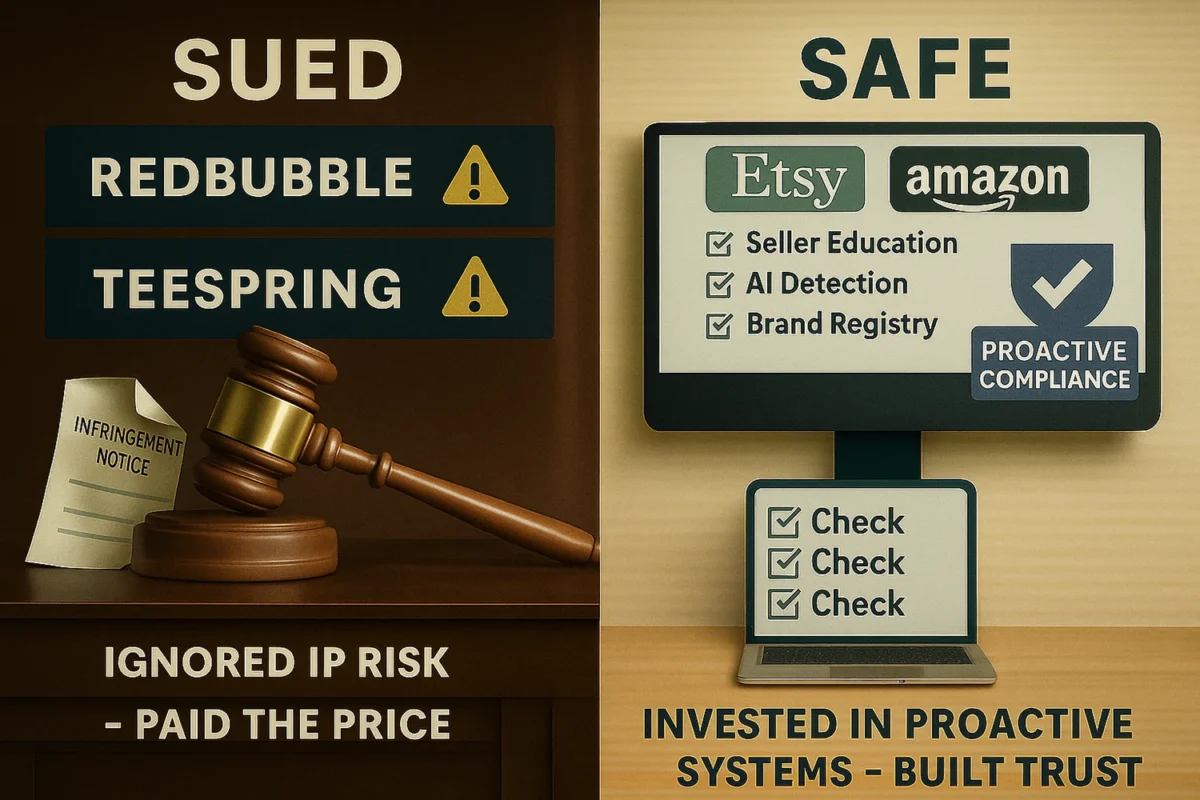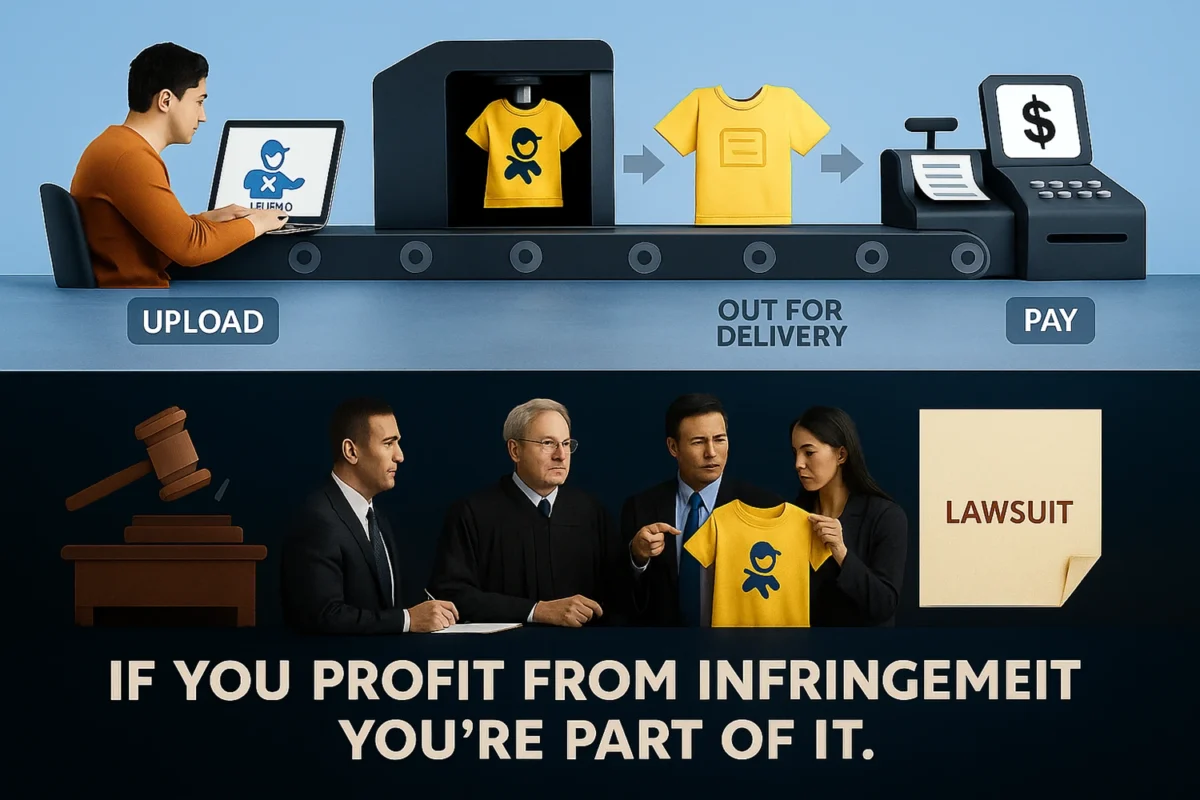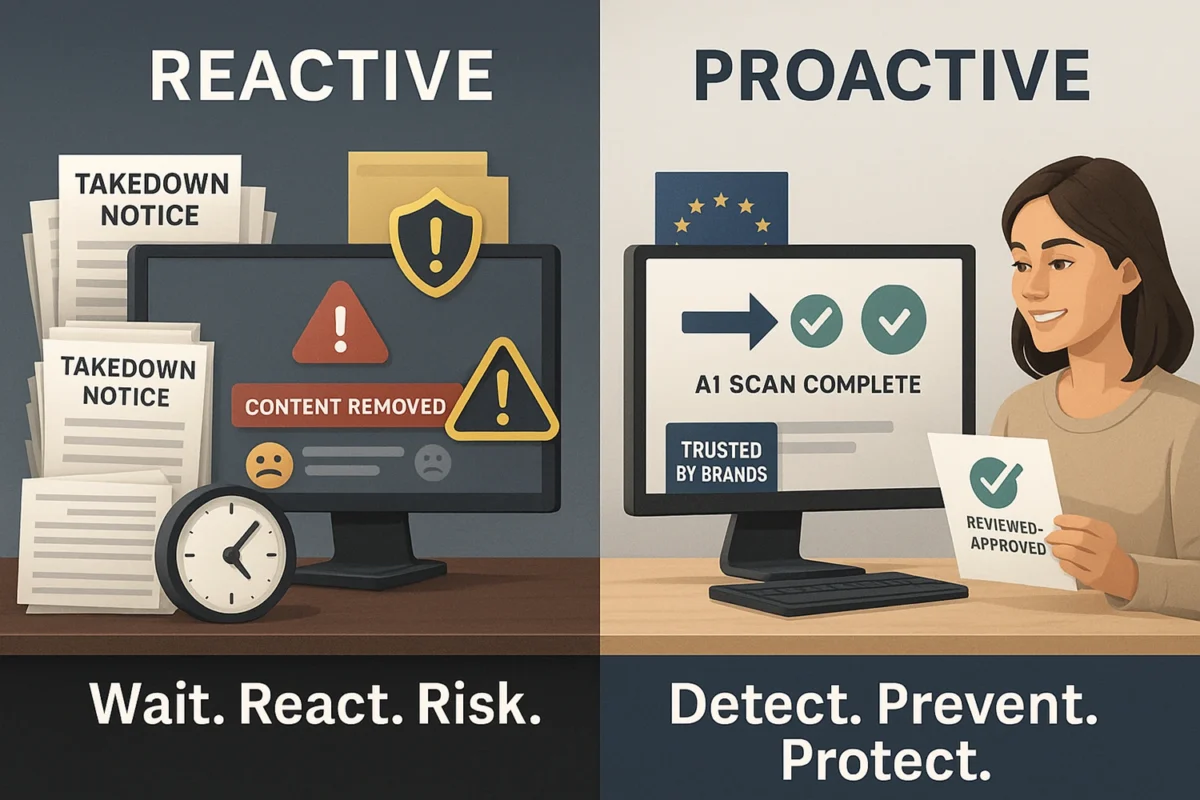Case Studies: How Marketplaces Got Sued (or Avoided It) Over IP
The difference between a platform that gets sued for IP infringement and one that doesn’t?
It’s not luck.
It’s preparation, enforcement, and investment in proactive systems.
Here’s how major marketplaces have fared when it comes to intellectual property – and what every platform operator can learn from their wins and failures.
1. Redbubble: Profit-Sharing = Platform Liability
Redbubble promoted itself as a creative marketplace for artists. But it also:
- Printed and shipped products featuring user-uploaded designs
- Processed payments and customer service
- Earned a share of the profit from every transaction
Several courts found that Redbubble wasn’t just a passive intermediary – it was actively facilitating and monetizing infringement.
Key rulings (e.g., Pokémon, Hells Angels, Atari cases) emphasized:
- The platform’s integrated fulfillment model
- Lack of robust, pre-upload IP enforcement
- Failure to prevent repeat infringement of known IP
Lesson: Profit-sharing without proactive detection = liability.
2. Teespring: A Magnet for Brand Lawsuits
Teespring (now Spring) became a hub for viral POD designs – but also for rampant brand misuse.
They faced repeated lawsuits from rights holders, including:
- NFL
- Harley-Davidson
- Marvel/Disney
- Major universities
Why?
- Minimal IP enforcement before content went live
- Keyword manipulation by users to avoid detection
- Lack of effective repeat infringer enforcement
Despite takedown procedures, courts and rights holders viewed Teespring as turning a blind eye to clear patterns of abuse.
Lesson: Ignoring scalable enforcement leads to legal fatigue – and brand distrust.
3. Etsy: Gradual Improvement Through Seller Tools
Etsy’s early model was also UGC-heavy, and it drew criticism for:
- Infringing items (e.g., Disney-themed baby clothing)
- Trademark misuse across categories
- Inconsistent enforcement across sellers
But instead of relying on takedowns alone, Etsy:
- Improved seller onboarding with clearer IP education
- Built internal flagging tools for trademarked keywords
- Partnered with rights holders on automated takedowns
- Offered transparency dashboards for brands
While Etsy still gets flagged occasionally, its trajectory shows how platform investment can improve both reputation and legal protection.
4. Amazon: A Proactive Model with Brand Registry
Amazon’s scale made it a prime target for counterfeit and IP infringement claims. But rather than just reacting, they invested heavily in proactive infrastructure:
- Launched Amazon Brand Registry for rights holders to manage listings
- Built a dedicated internal enforcement team (and AI detection tools)
- Implemented automated blocking and takedown workflows
- Worked with regulators and brands on global compliance programs
The result?
Fewer lawsuits, stronger brand relationships, and recognition as a proactive platform, even if occasional issues still arise.
Lesson: Proactivity earns legal and industry credibility.
Takeaway: Proactive Platforms Get Sued Less – And Trusted More
Across all these cases, one truth stands out:
Platforms that invest in scalable, intelligent IP enforcement are more likely to avoid legal fallout – and keep creators, users, and brands on their side.
That means:
- Going beyond takedowns
- Catching risk before it goes live
- Educating users
- Using AI-powered systems like VISUA’s Infringio to enforce consistently, contextually, and at scale
Want to build a proactive IP defense like Amazon – not a cautionary tale like Teespring? Book a demo with VISUA today to see how Infringio works.
Disclaimer: Not Legal Advice
This content is provided for informational purposes only and does not constitute legal or professional advice. The information reflects our understanding as of the date of publication and may not apply to every situation or jurisdiction. You should consult qualified legal counsel for advice tailored to your specific circumstances. Any actions taken based on this content are at your own risk. Neither VISUA nor its affiliates accept liability for any losses or damages arising from the use of this information.
Book A DemoRELATED
Redbubble, Teespring, and the Lessons of IP Enforcement Failures
Reading Time: 3 minutesPrint-on-demand (POD) platforms empower creators to design and sell products without holding inventory. But with that power…
BlogHow AI Is Changing the Game in IP Enforcement
Reading Time: 2 minutesIP enforcement used to be simple: But today’s infringement landscape – especially for POD and UGC-heavy platforms…
BlogThe Future of IP Compliance – Proactive vs. Reactive Models
Reading Time: 2 minutesFor years, most platforms treated IP compliance as a reactive function: But the market – and the…
Blog


